1.2 Visual Text Revision - Symbols, Motifs and Costume in "The Truman Show"
1/15
There's no tags or description
Looks like no tags are added yet.
Name | Mastery | Learn | Test | Matching | Spaced |
|---|
No study sessions yet.
16 Terms
Costume
The fashion within The Truman Show is all retro - they belong in the 40s and 50s: dresses with big skirts and waists; women in hats - and men too. They help to suggest this 'ideal' world is a hankering for the past - and a mythical past at that. The other noticeable thing is the colour co-ordination of the clothes - and everything else in Seahaven. Freeze on any Seahaven scene and you will see the same few colours, all toning.
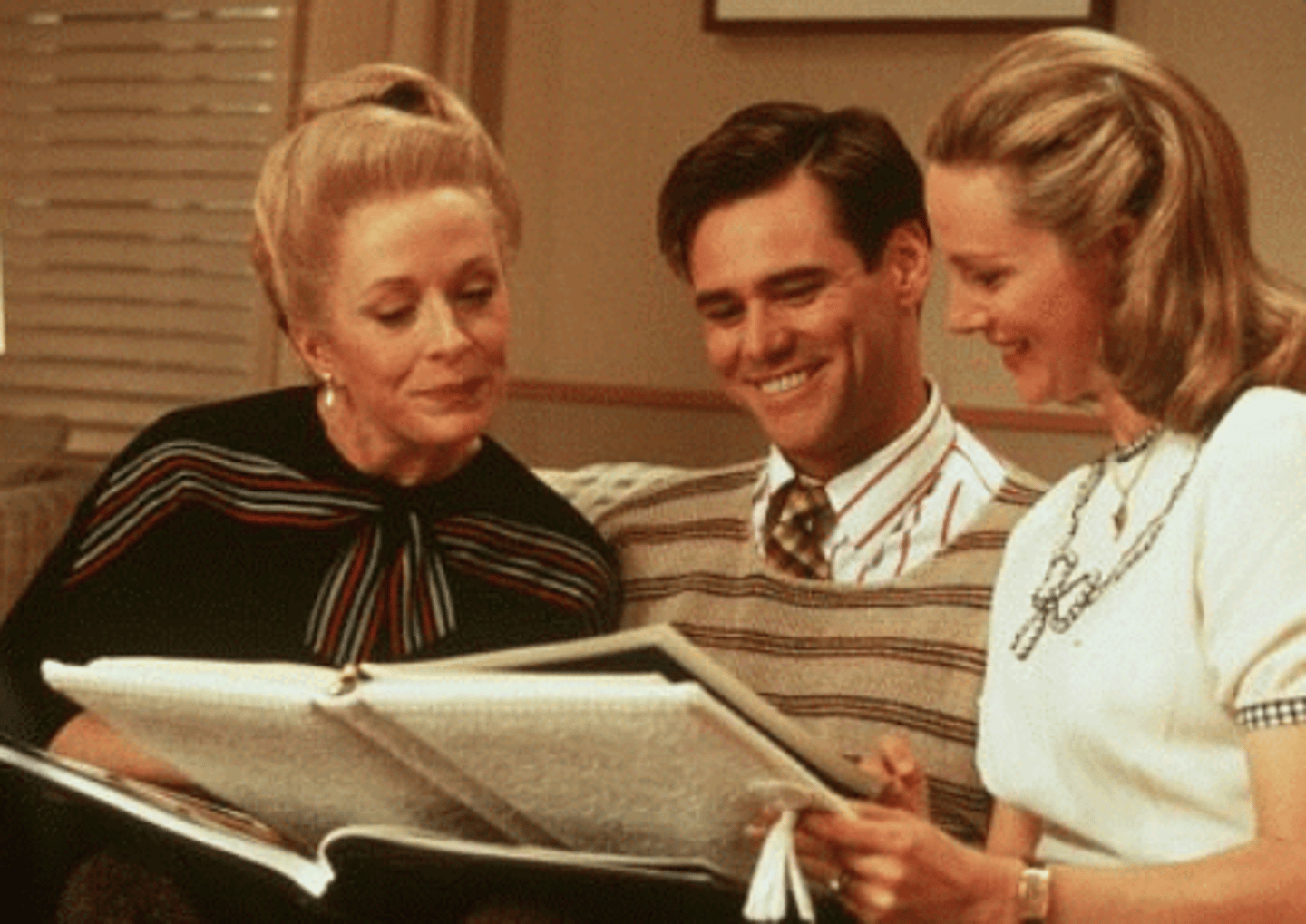
Costume
Christof wears the 'uniform' of the creative artist: black clothes, beret, wire-rimmed glasses (though his white 'collar' also gives him the look of a priest). Other technicians dress in dark colours. "The Truman Show" characters wear carefully colour co-ordinated costumes, with only Meryl dressing differently from the rest of the characters. The basic colours are subdued: neutral browns, greys, with dark or pale green, and dull yellows. Throughout is an accent red which is a terracotta/maroon red. Little blue, no orange, no bright greens or yellows, or clear reds. Stripes are common, and associated with Truman, who nearly always wears stripes (which may suggest prison clothing). The staff in the Truman Bar wear maroon aprons and striped shirts. Even the umbrellas on the beach are striped. Meryl, however, is often in spots and checks - black and white, flowers. Pluto's spots recur elsewhere also - the twins' ties, for example. Truman is also associated with tartan - his pyjamas, his suitcase, his cap; there is tartan on Sylvia's red sweater, and Meryl wears it in the portrait behind which Truman hides his collage of Sylvia. Women wear hats, not worn in the outside world since the sixties, and dresses with big skirts. Men are in hats and some in walk shorts - another fashion that has largely gone. Truman changes from his gardening clothes back into a collar and tie to go hitting golf balls with Marlon - another fifties' hangover, when men in 'white collar' jobs wore ties even when they were relaxing.
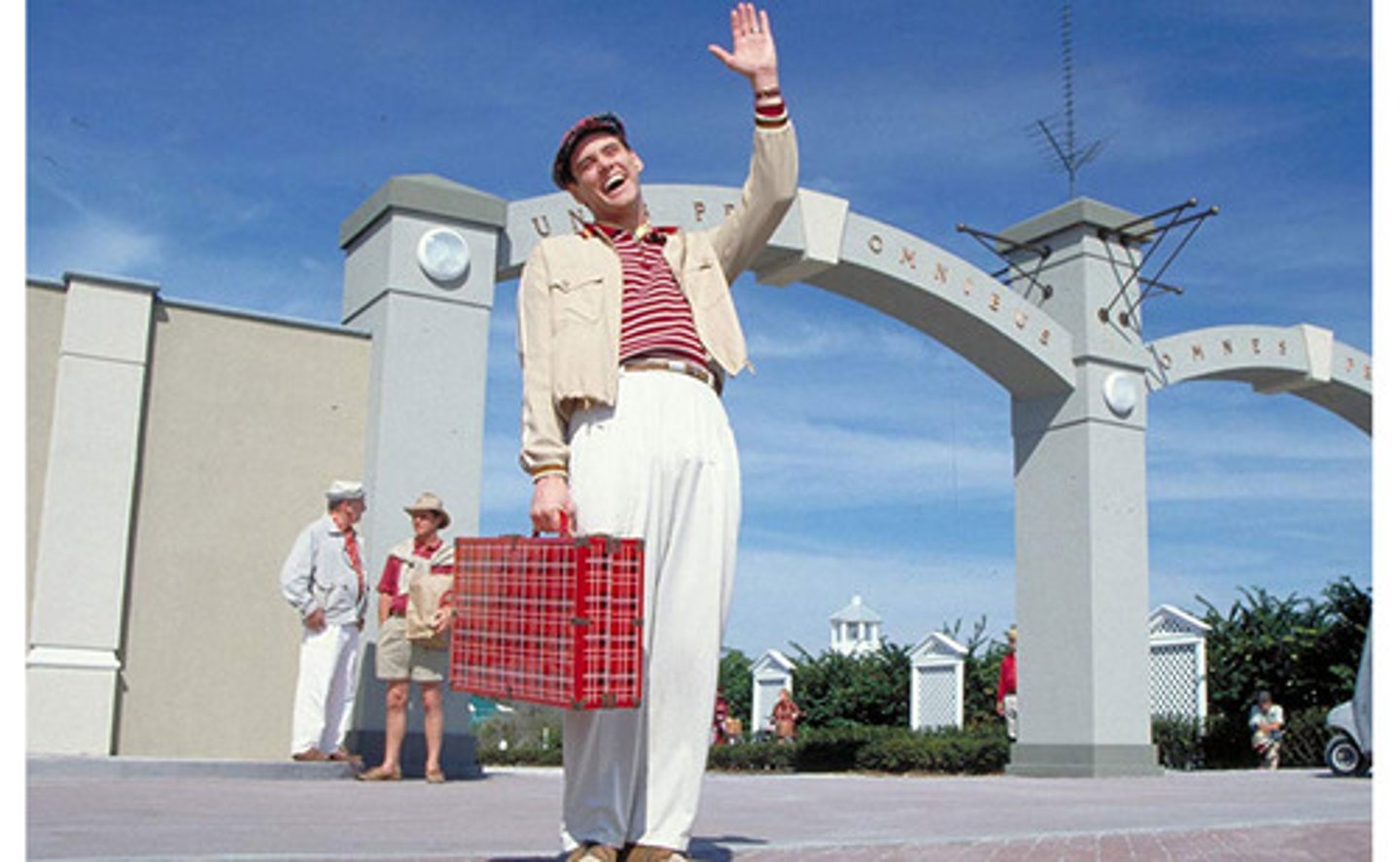
Peter Weir
The real-life director of "The Truman Show."
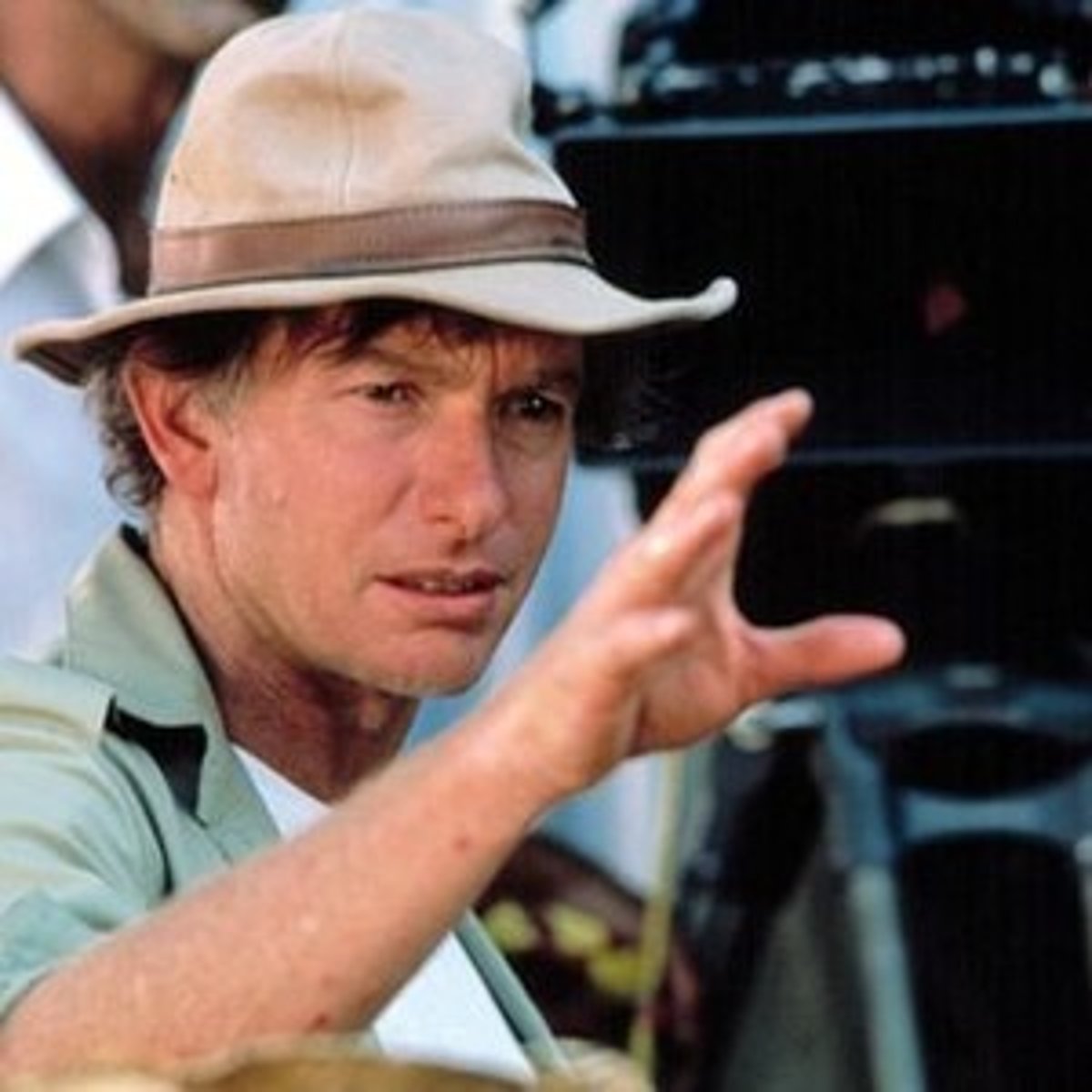
1998
The year when The Truman Show was released.
Term to know - Symbolism & motif
What's the difference between symbolism and motif?
A symbol is an object, a picture, a written word, or a sound that is used to represent something.
A motif is an image, spoken or written word, sound, act, or another visual or structural device that is used to develop a theme.
A symbol can be repeated once or twice, while a motif is constantly repeated
In "The Truman Show" reoccurring symbolism and motifs are;
- The sea/water
- The wall
- Bridges
- White picket fences
- Dogs
- The moon
- Fiji
- Newspaper
- Collage of Sylvia
- Beer from Marlon
These are important because of what they signify. For example, bridges represent the way out, but their length and being over water represents confinement - they offer only a long and difficult escape route. Other bridges in the film are simply a dead end - offering no escape at all.
Motif - The sea/water
The "sea" is the main symbol of confinement, fear and freedom. It represents confinement as it is so vast, so broad, and Truman can not go over, above or in it. It represents fear as his father 'died' at sea. It represents freedom as that is the way "out". It's an escape, a way to vanish from this world. Freedom is further represented through Truman's dreams as a youth to be an explorer, and despite Christof's manipulations, this dreams never appears to die.
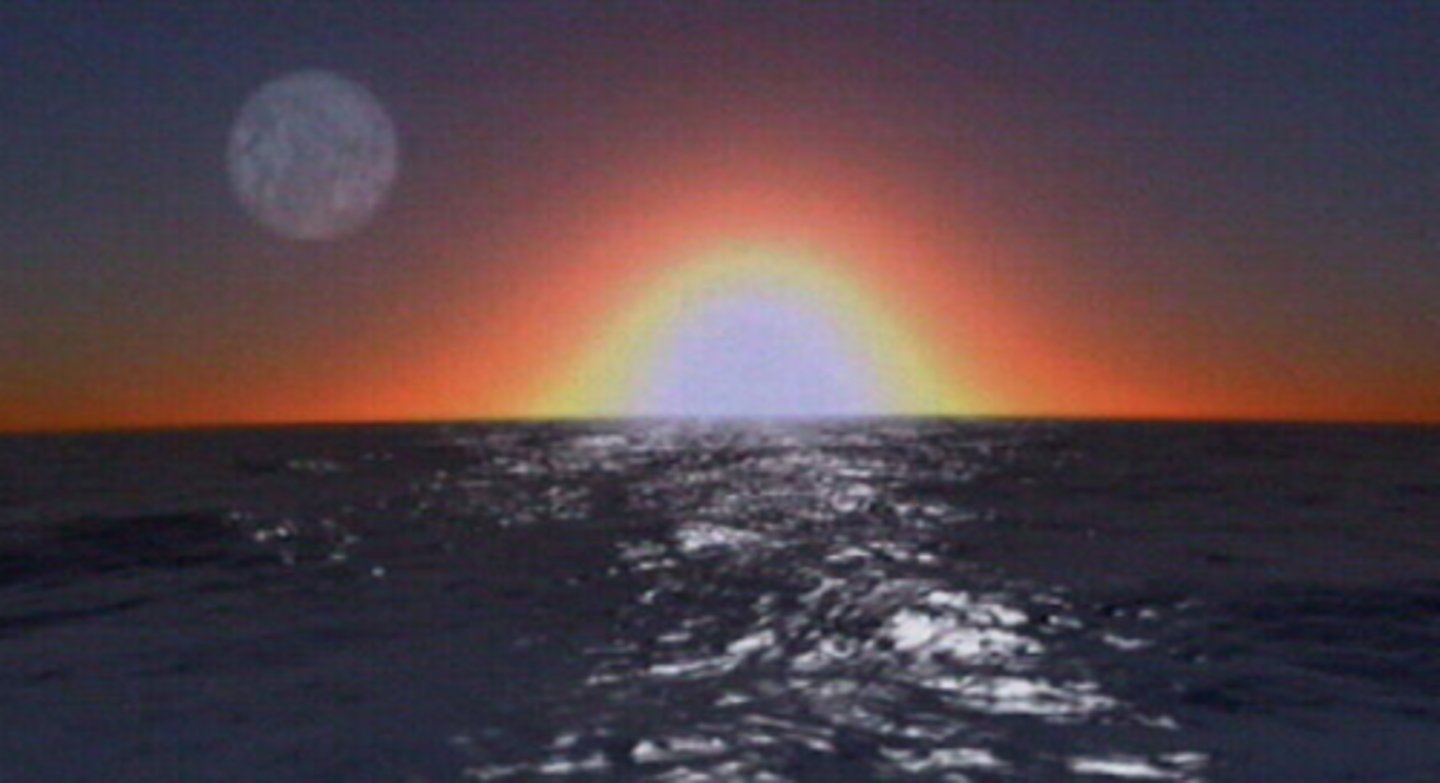
Motif - Bridges
Bridges represent the way out, but their length and being over water represents confinement - they offer only a long and difficult escape route. Other bridges in the film are simply a dead end - offering no escape at all.
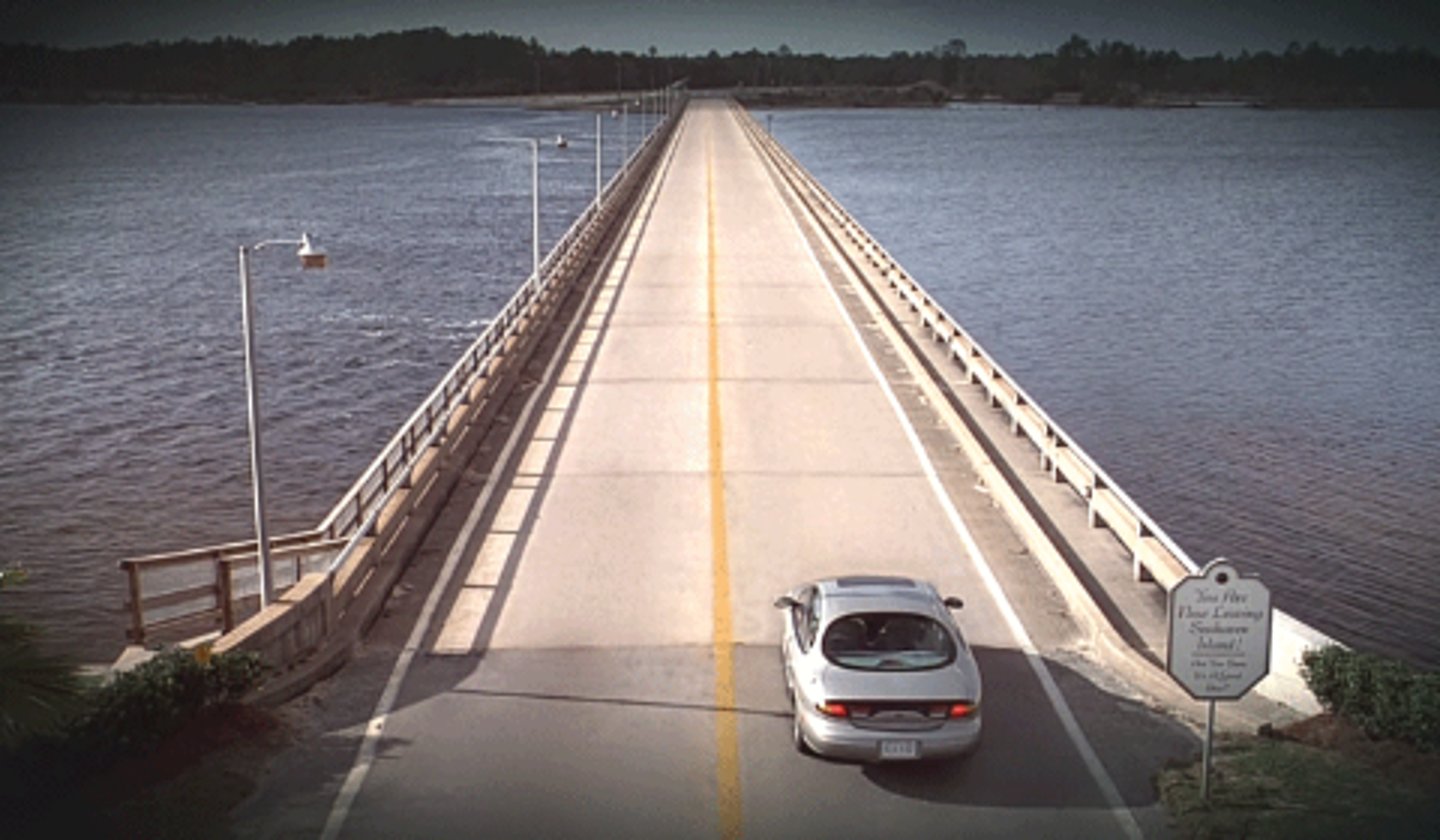
Motif - White picket fences
Suggests entrapment - a lovely fence to keep you in. It also promotes the idea of The American Dream. "Children, wife, house and white picket fences."
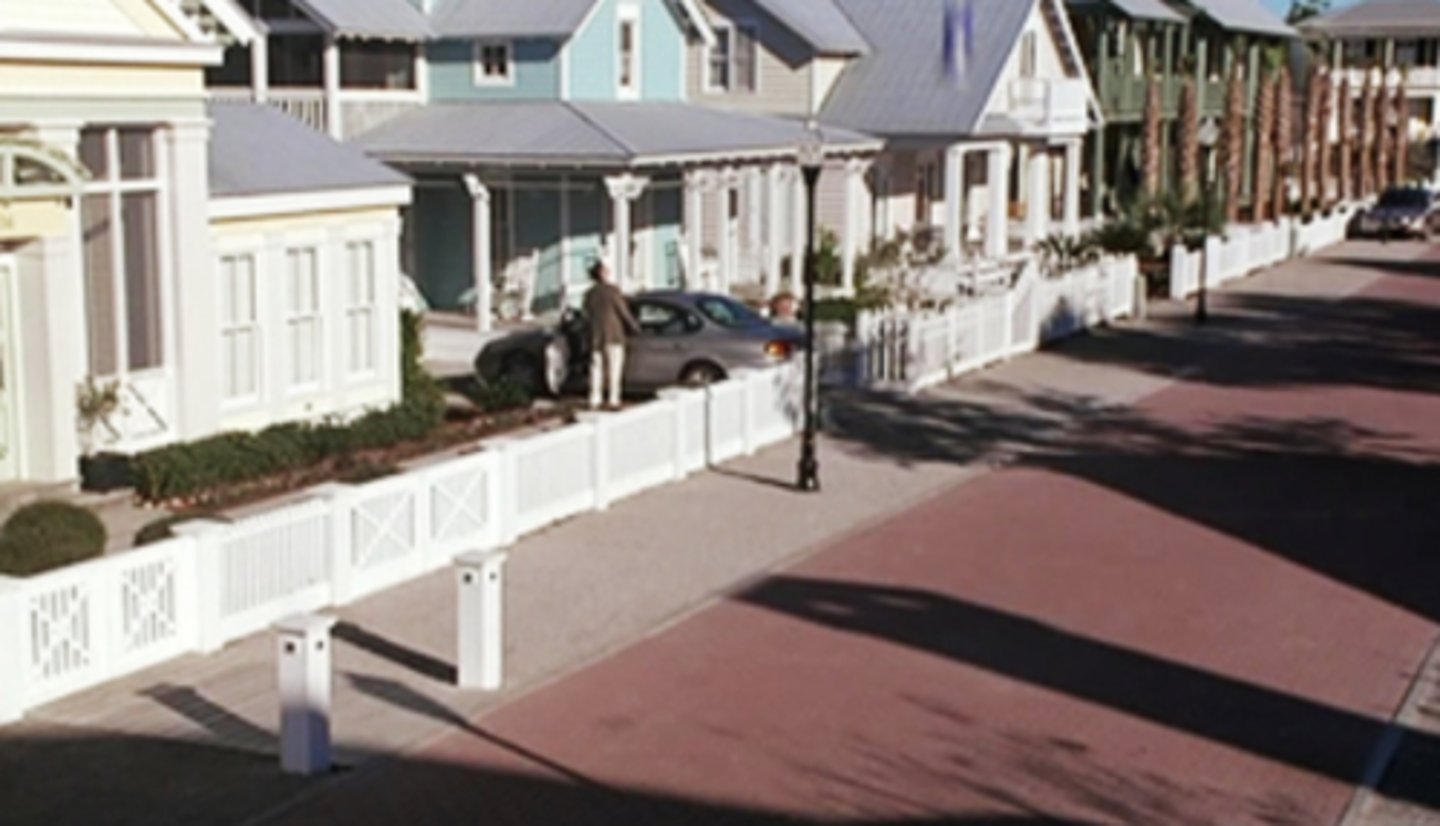
Symbolism - The wall
The wall that Truman hits is the end of his known world. The wall is a metaphor for the world that has trapped Truman since birth, and he has now been reborn into the "real world". The wall confined him, trapped him, but through inner strength and conquering a great fear, he is able to find a way out.
Truman has said goodbye to his creator (Christof) and to his audience and has left the stage. He heads out into the dark, the unknown, but into the real world.
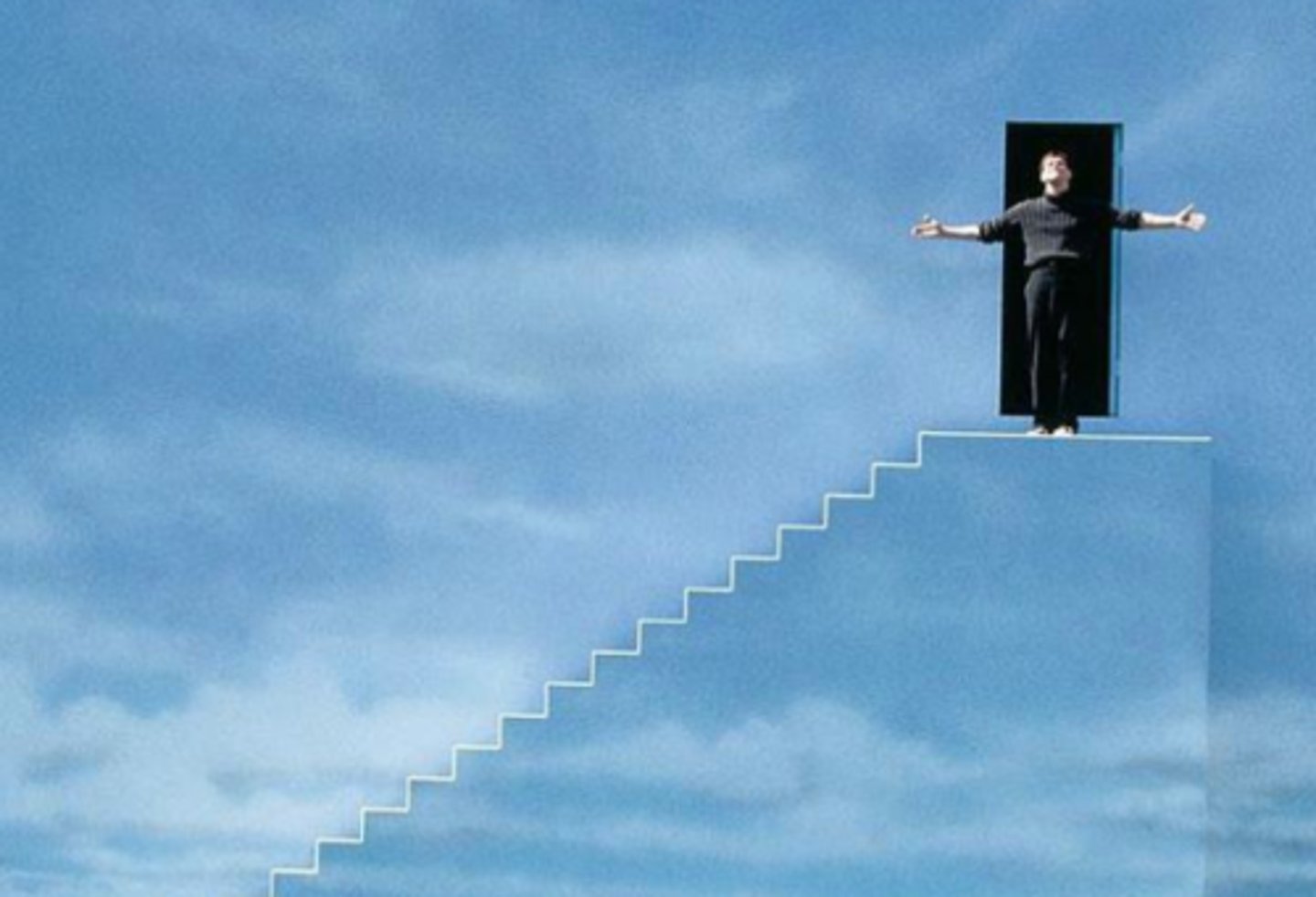
Motif - Dogs
Pluto the Dalmatian is part of his daily routine and then becomes a snarling tracker dog; the woman with the dachshund abandons it when she chases after Kirk; 'Dog Fancy' is a prominent product advertised. Sirius the Dog Star. Young Truman is threatened by a savage guard dog on the bridge, hence Truman's fear of Pluto.
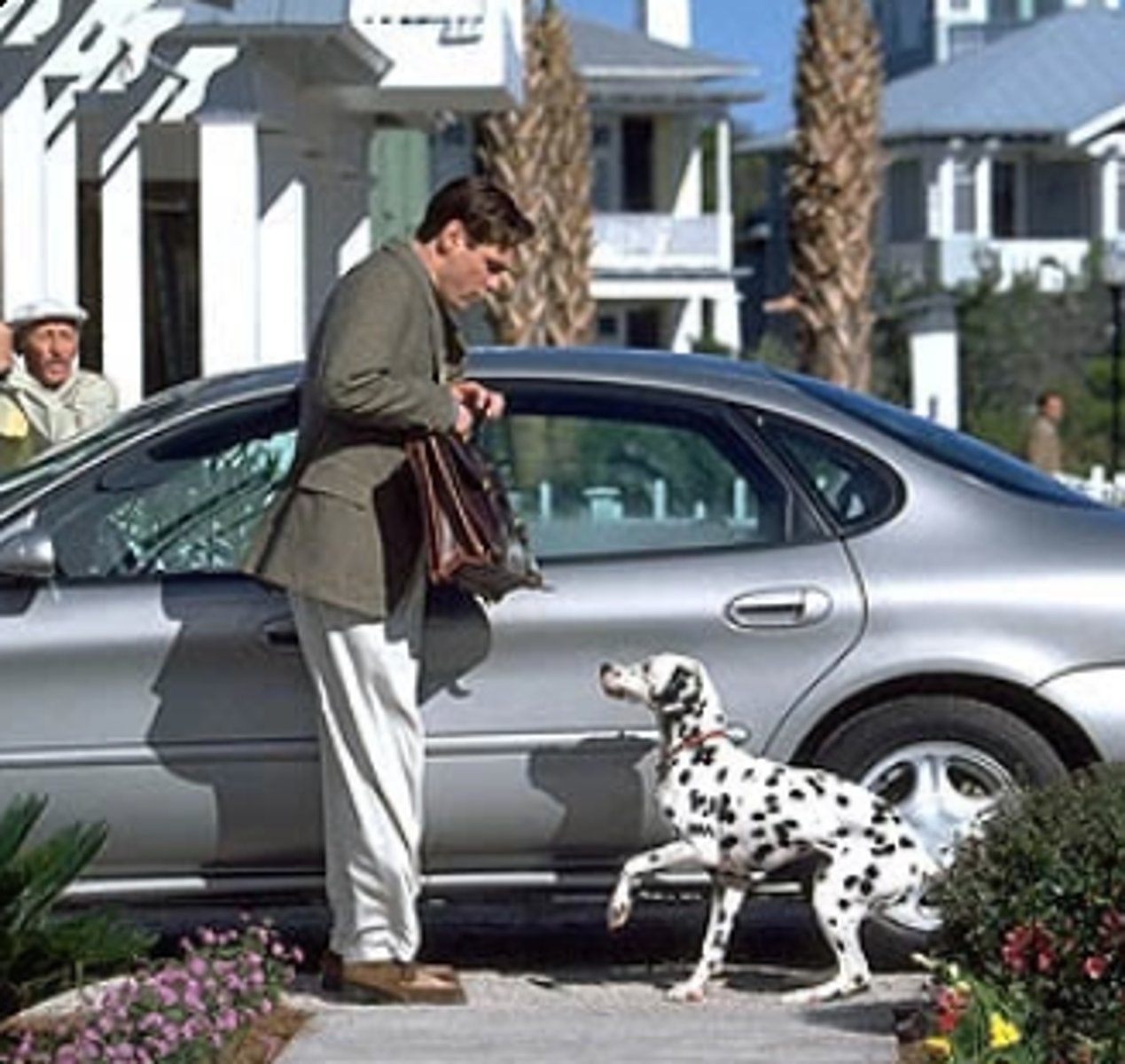
Motif - The moon
It is constantly in the sky keeping an eye on Truman. Shining on the water, the centre of operations, becomes a searchlight. The moon helps Christof look down on his creation.
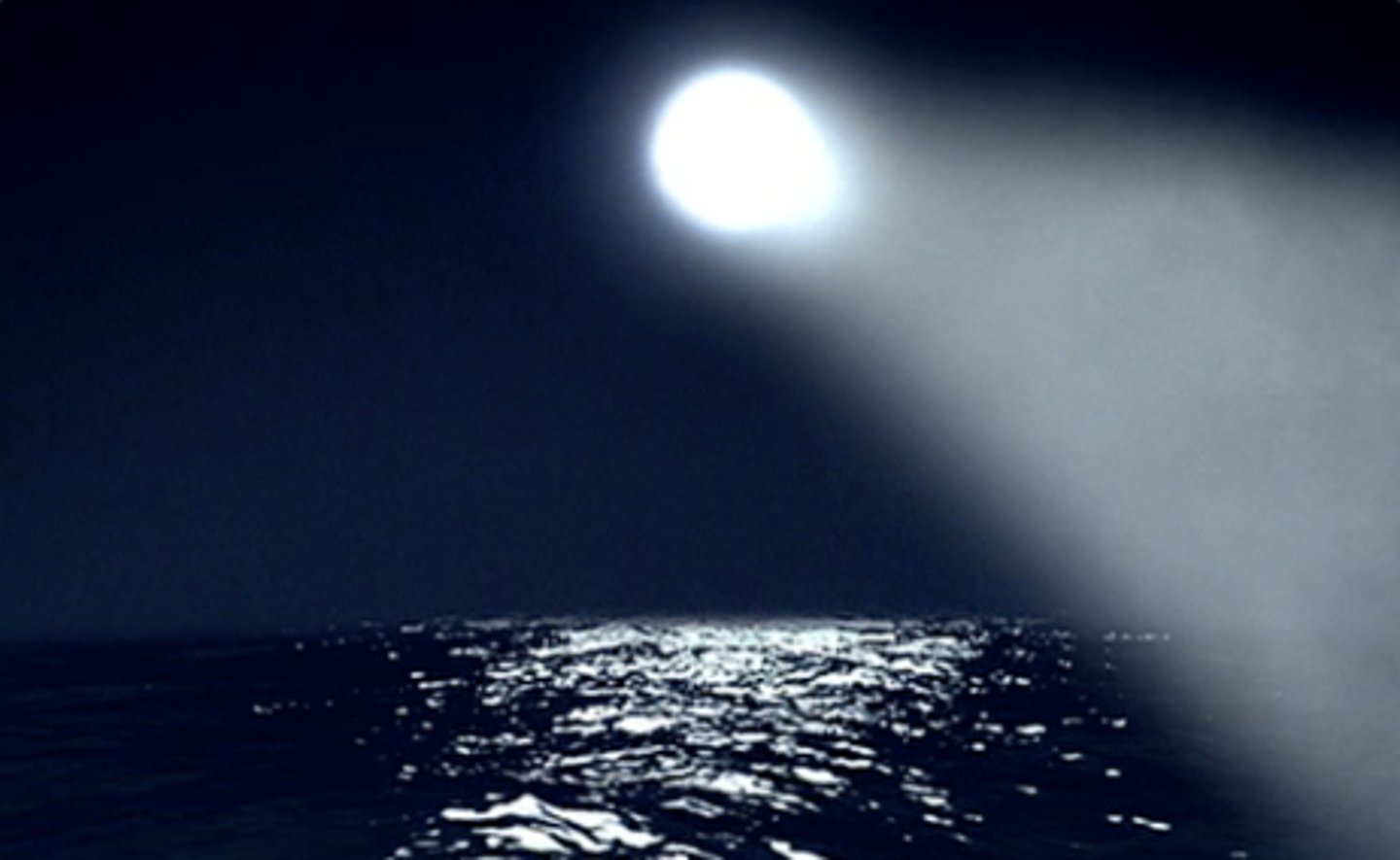
Motif - Fiji
Fiji is about freedom from Seahaven. It is where Sylvia is - a person that he felt a genuine connection with.
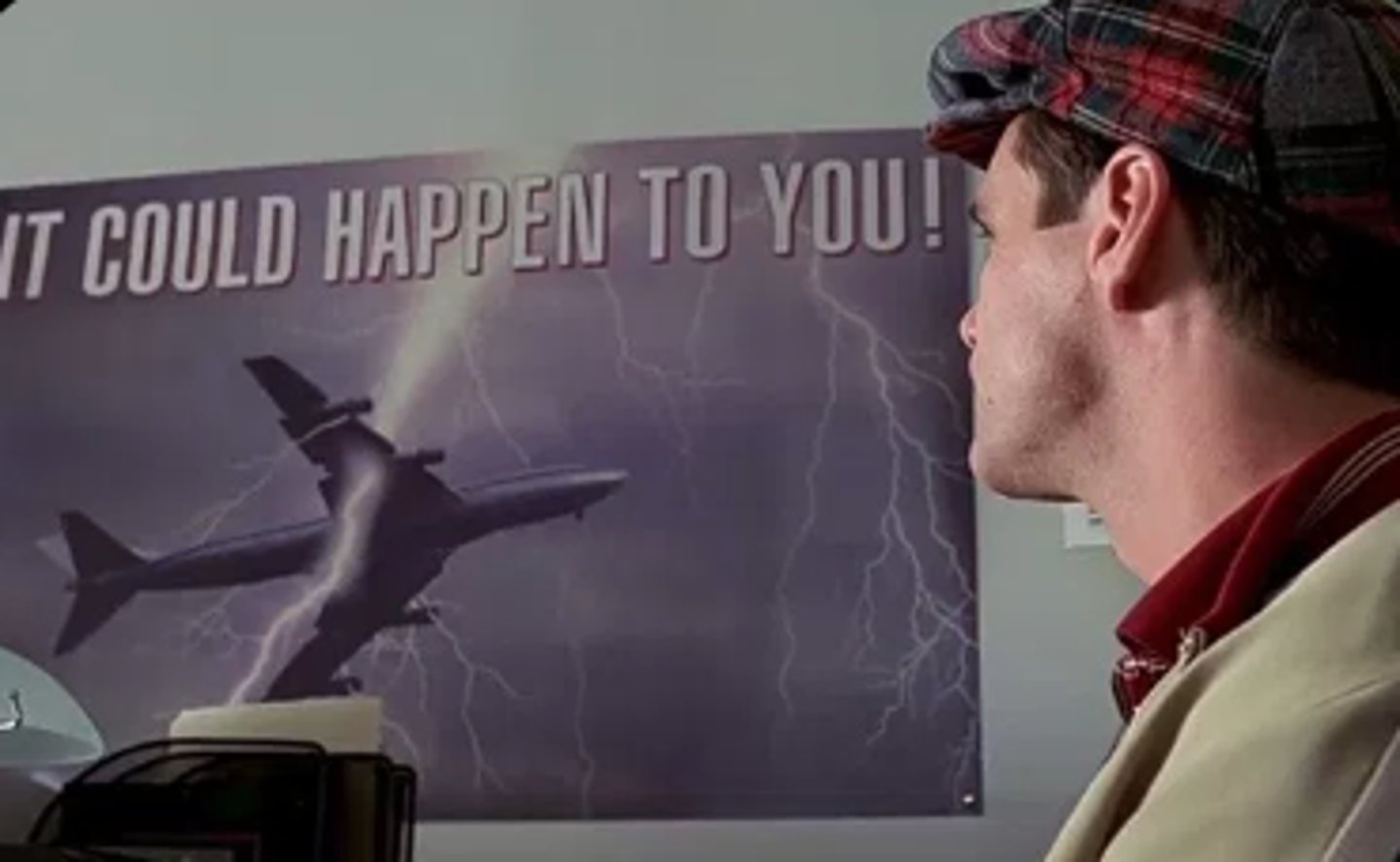
Symbolism - Newspaper
The newspaper was used to spread misinformation to Truman.
At the start of the film it was used to show how routine his life was. This is in contrast later in the film when he doesn't buy a newspaper signifying that he is starting to rebel.
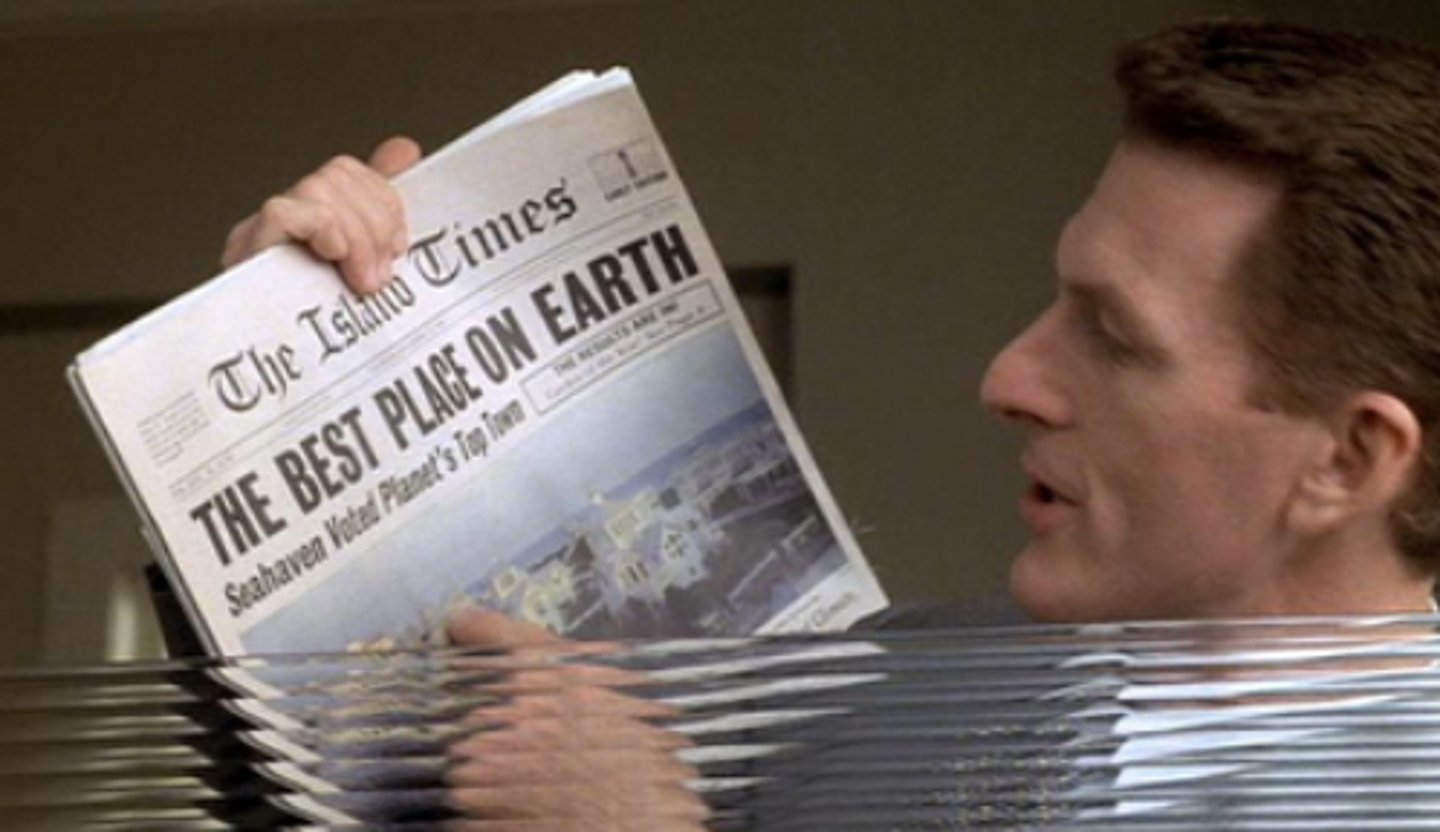
Symbolism - Collage of Sylvia
The collage of Sylvia is a way of keeping the memory of her alive. It is kept in Truman's 'secret' place in the basement. His goal is to reunite with her in 'Fiji'.
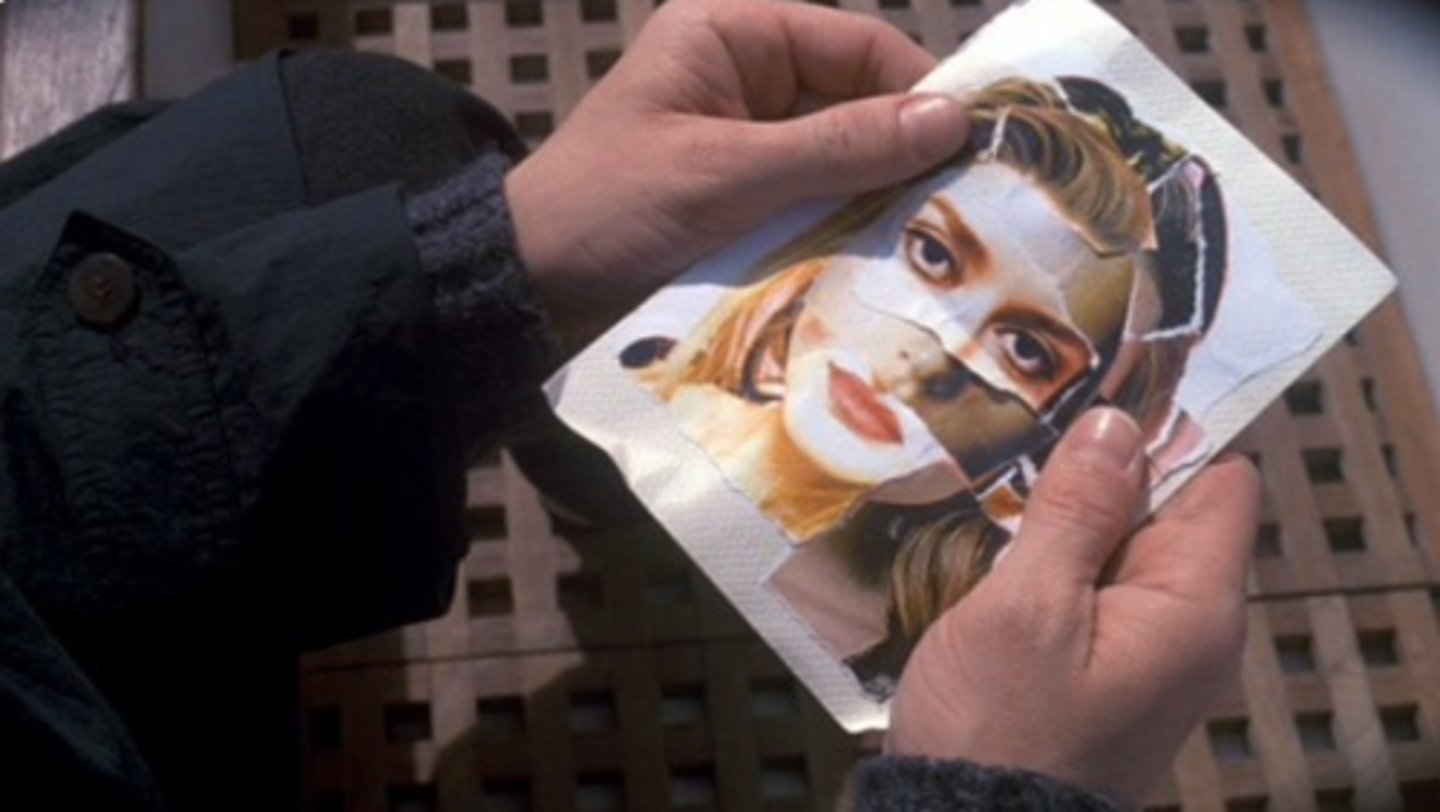
Symbolism - Marlon's beer
The motif of beer is used for two main reasons.
Firstly, it is shown for commercial purposes as this helps fund the TV show.
Secondly, it is used to show "mateship" between Marlon and Truman. That there is normality of having a beer with a 'friend'.
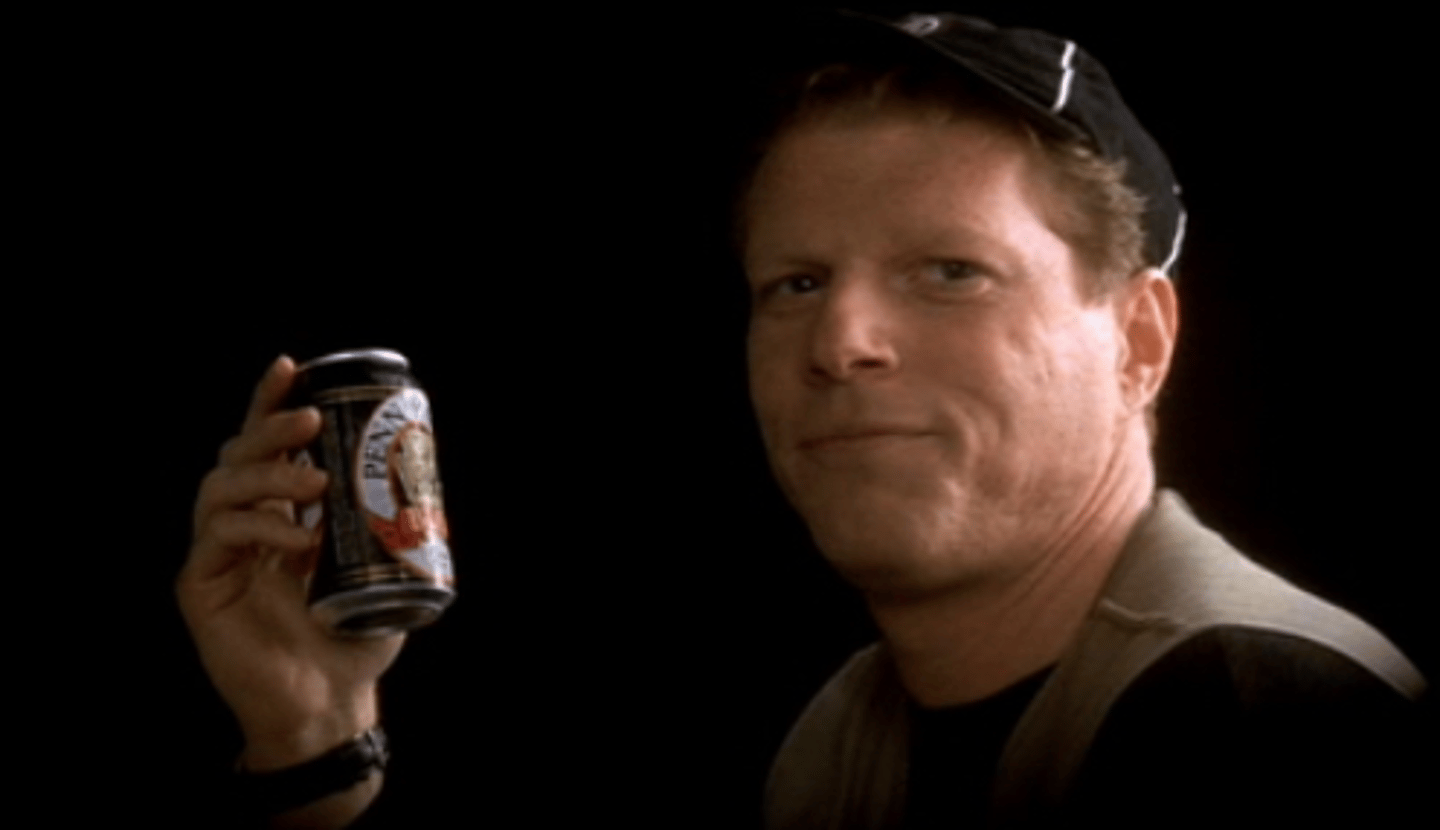
Putting the name of a text in italics - The Truman Show
When you reference the name of a text in your essay, you should put it in italics. For example, The Truman Show.